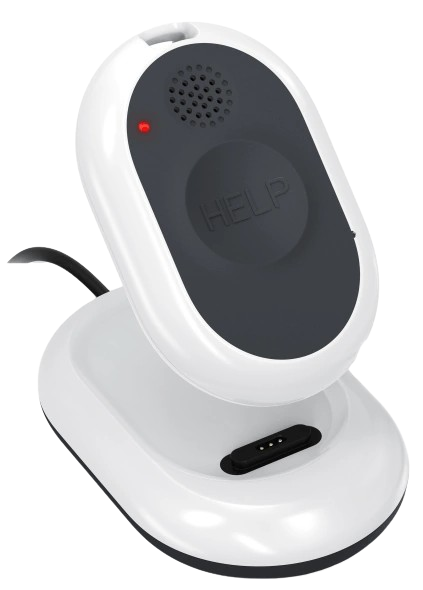British Columbia Lone Worker
Our Safety Policy Guide For Lone Workers In British Columbia
Although most provinces in Canada generally follow the federal OHS code, there are guidelines that are directly provided by the provincial government of British Columbia.
On this page you will find lone worker legislation, policies, and best practices as provided by British Columbia authorities. This page can be used as a reference guide for lone workers and their employers within British Columbia.
On This Page
Our Guide To Lone Worker Safety Policy And Legislation In British Columbia
Being a lone worker in British Columbia can be considered dangerous. As such it is important for employers to follow policies and guidelines as outlined by British Columbia provincial law and the Canadian federal law when hiring lone workers for their business.
On this page we will outline important guidelines and best practices to follow when employing lone workers in British Columbia. Please keep in mind this page is intended for reference, and should not be considered for legal advice. We encourage all visitors to conduct their own research into OHS policies in Canada.
How British Columbia Defines A Lone Worker
A lone worker in British Columbia is anyone who may find themselves operating by themselves entirely or partly without the assistance of other employees.
The following questions are important to ask when determining if someone is a lone worker; if all your answers are "no", they are likely defined as a lone worker in British Columbia.
- Are there other people around the employee?
- If so, would those people be aware of your employee's need for assistance, in the event of an emergency?
- If so, would those people be willing to provide assistance?
- If so, would those people be able to provide assistance in a timely manner?
Employing A Lone Worker In British Columbia
When employing a lone worker in British Columbia, there are a few important key components to keep in mind.
- Reduce hazards and risks. Wherever possible, ensure your lone worker employees can operate in safe conditions. You can do so by implementing safe work procedures, provide safe work equipment, and organizing the workspace to minimize accidents (such as keeping heavier equipment in low, easy to reach storage).
- Perform hazard assessments. Communicate and train your employees on potential risks they may experience in the work place. Employees who work alone should be able to identify and mitigate risks.
Learn How You Can Protect Your Employees With Loneworker.com

With Loneworker.com you can be equipped with the knowledge and the means to protect your employees and protect your business. Contact us today to learn more about how Loneworker.com can protect you and your employees.
How The Safe Lone Worker App Can Protect British Columbia Lone Workers And Employers
One of the key components of keeping lone workers safe in British Columbia is providing a method of quick communication and monitoring in the event of an emergency.
With the Safe Lone Worker App, you can monitor your lone worker employees easily while they perform their duties, even if they are travelling alone. The app works alongside our Man Down Worker Alert devices, which are easy to carry emergency call buttons that provide instant communication with a specialized monitoring center when pressed.
Keep your lone worker employees safe with our Safe Lone Worker App, available in British Columbia.
British Columbia Lone Worker Policies
The content below has been included as a direct reference for lone worker policies as provided by British Columbia. This content has been included to serve as more detailed information and an easy reference point. This information is provided for your convenience, but should not be taken as legal advice. We encourage you to conduct your own research into the laws and regulations of your jurisdiction before making any decisions.
Introduction
Employees who work alone or in isolation tend to be more vulnerable than those who have co- workers present, particularly if the lone worker is on shift during late night hours. If a lone worker is injured or an emergency occurs, how does the worker get help? What if the worker is unconscious? Even though such incidents aren’t that common, when they do occur the consequences can be serious.
Employees who work alone or in isolation also face an increased risk of confrontations or even violence. For example, a lone retail worker may be more vulnerable when dealing with angry, difficult, or abusive customers. Even if an incident doesn’t lead to a physical confrontation, it can still be stressful or emotionally traumatic for the worker.
Working Alone2 Who should use this handbook
This handbook is for employers who have employees working alone or in isolation. For examples of employees who may be working alone or in isolation.
The Workers Compensation Act requires employers to provide a workplace that is as safe as possible for their workers. Specific requirements for working alone or in isolation are described in the Occupational Health and Safety Regulation. This handbook explains these requirements, and describes how employers can meet their legal obligations to provide a safe working environment for employees.
What does working alone or in isolation mean?
According to the Regulation, to work alone or in isolation “means to work in circumstances where assistance would not be readily available to the worker (a) in case of an emergency, or (b) in case the worker is injured or in ill health.”
To determine whether or not assistance is “readily available,” ask the following questions:
- Are other people in the vicinity?
- Are those people aware of your worker’s need for assistance?
- Are they willing to provide assistance?
- Are they able to provide assistance in a timely manner?
Examples of working alone or in isolation
- Retail (convenience store) employees
- Taxi drivers
- Truck and delivery drivers
- Home care and social services employees
- By-law officers and security guards
- Forestry workers (doing high-hazard work with no regular interaction with other people)
- Warehouse workers in cold rooms or freezers
- Night cleaners and custodians in private and public building
- Night-shift employees
Working alone or in isolation does not include
- Independent realtors
- Owner-operators of trucks
Learn How The Lone Worker Monitoring Device Works.

By using a Safe Lone Worker Man Down alert you can monitoring your employees and keep them safe even while they are travelling or working on their own.
Our devices are equipped with cellular and GPS technology to provide service all across Canada and the United States of America.
Contact us today to get your Safe Lone Worker Man Down Alerts for you and your business.
Hazard identification and risk assessment
If you have an employee who is working alone or in isolation, it’s your responsibility as an employer to tell the employee about any hazards in the workplace. This means you will need to identify hazards and assess the risks associated with them.
You can prevent most workplace injuries and illnesses by identifying hazards and taking steps to eliminate them. If you can’t eliminate them, then implement controls to minimize the risk to your workers. Hazard identification doesn’t have to be a complicated process. Start by going over each area of your workplace — look for hazards and think about what could possibly go wrong in a specific area or while a specific task is being carried out.
Examples of potential hazards
You might find, for example, that a cluttered storage area is creating tripping hazards (hazardous area); or that workers are at risk of violence when they are making cash deposits (hazardous task).
Other potential hazards
| Hazard | Example of scenario |
|---|---|
| Motor vehicle accident | Driving alone on a rural road that is infrequently travelled |
| Falls | Using a ladder (even if it’s a short stepladder) |
| Burns | Working around hot cooking oil |
| Sprains and strains | Lifting heavy boxes |
| Violence | Working alone during late night hours |
| Chemical exposures | Using cleaning products, paint products, or other potentially hazardous materials |
How to identify hazards
Follow these basic guidelines:
- Consider all aspects of your business — Think about the location, nature, and circumstances of your business or industry.
- Consider previous accidents — How many incidents have there been in your workplace and what happened? What about incidents at nearby businesses or previous work locations?
- Involve your employees — Ask for their input regarding current problems, concerns, and possible solutions.
How to assess risks
Once you’ve identified hazards, the next step is to assess the risks associated with them. A risk assessment will help you prioritize which hazards should be dealt with immediately and which ones can be dealt with later. When assessing risks, try to determine how likely an incident is and how serious it would be.
How likely is it that the hazardous condition or situation will result in an incident?
- Have there been previous incidents at your location?
- Have there been similar incidents at nearby businesses?
If an incident does occur, how serious would it be?
What were the outcomes of previous incidents? For example, did an incident result in a minor injury? Did it require a trip to the hospital? If it was a violent incident, were weapons used? Did it involve verbal abuse or threats?
If an incident is likely to happen or it could result in a serious injury, then you should deal with that hazard first, and you will probably need to develop written safe work procedures for it. If an incident is unlikely or it would only result in a minor injury, then that hazard should be placed further down the list, and there is probably no need to develop written procedures.
Involve your employees
If your company is small, include all your employees in the risk assessment process. If your company is larger, gather as many employees as possible. Make sure at least one person from every site, section, and shift is present. Gather groups by division or job description, or include a representative from each. It is essential to involve the joint health and safety committee (or worker health and safety representative, if applicable).
In a very large organization, you may want to supplement this process by distributing a memo or form asking for employee input. The form can be anonymous, but it’s a good idea to have employees list their job types, shifts, and locations (for example, “file clerk, afternoon shift, Surrey office”).
Identify hazards during safety inspections
Hazard identification and risk control are key components of an occupational health and safety program. Your health and safety program should also include regular safety inspections. Besides being an employer requirement, a safety inspection provides a good opportunity to identify hazards. You might find it helpful to use an inspection checklist such as the sample on pages 18–21.
Eliminating hazards or minimizing risks
Once you’ve identified hazards and assessed the risks associated with them, you need to find ways to control those risks. Risk control involves eliminating the hazard entirely, whenever possible; if that is unrealistic, risks must be minimized as much as possible.
Engineering and administrative controls
If a hazard cannot be eliminated, there are two options for minimizing the risks associated with the hazard: engineering controls and administrative controls.
Engineering controls
Engineering controls minimize risk by modifying the physical work environment. This may involve the physical arrangement, design, or alteration of workstations, equipment, materials, production facilities, or other aspects of the environment. For example, installing a protective barrier between an employee and the public is an engineering control.
Administrative controls
Administrative controls minimize risk by modifying work processes or activities. This may involve the provision, use, and scheduling of work activities and resources in the workplace, including planning, organizing, staffing, and coordinating. For example, rearranging the work schedule so that more than one employee is always on shift is an administrative control.
How to minimize risks
The following are some guidelines for minimizing risks:
- Modify equipment or the design of the workplace. For example, reduce the risk of falls by storing stock at lower heights so workers don’t have to climb ladders to retrieve it.
- Select appropriate safety features when purchasing or replacing equipment. For example, minimize the risk of a “caught in machinery” accident by making sure a dough mixing machine has an effective safeguard.
- Modify work procedures. For example, minimize the risk of violence by telling employees to use main entrances, not secluded or rear exits, when leaving work.
- Develop and implement safe work procedures. Make sure workers follow the procedures.
- Make sure workers use personal protective equipment such as gloves, goggles, ear plugs, and safety footwear.
- Schedule deliveries when there is more than one worker to help with lifting.
- Make sure that only trained and experienced people perform hazardous tasks.
Written safe work procedures
Some tasks require workers to follow a written safe work procedure to eliminate or minimize risks. For example, in your workplace you may have developed a procedure for locking out machinery before cleaning it. Here are examples of topics that require written safe work procedures:
- Lockout
- Fall protection
- Personal protective equipment
- Violence in the workplace
- Chemical spill clean-up
- Emergency evacuation
- Person check procedures
Person check procedures
In addition to any other written safe work procedures, employers must develop and implement a procedure for checking on the well-being of employees who are working alone or in isolation. A person check procedure must include the following:
- The designated person who will establish contact and record results
- Time intervals between checks
- A check at the end of the shift
- A procedure to follow in case the employee cannot be contacted
The time intervals for checking the well-being of the employee must be developed in consultation with the employee assigned to work alone or in isolation. Time intervals should be based on the level of risk the employee is exposed to, with lower risks allowing for longer periods between checks. For example, an employee in a store that is located in a strip mall, with workers of other employers nearby, may not require checks as frequently as a worker who is working in an isolated premises.
The person assigned to check on the well-being of a worker must be trained in the written safe work procedures and what to do if they are unable to make contact with the worker.
Review written procedures
Written safe work procedures must be reviewed in all the following cases:
- At least once a year
- Whenever there is a change in work arrangements or the procedures are not effective
- Immediately following an incident related to the procedures
Training
All workers need supervised, hands-on training in the written safe work procedures that apply to their jobs. For example, if an employee is required to operate a tool or machine, that employee has to be properly trained in the written procedures for using the equipment safely. Employees must be properly trained before they start a job.
What should employee training include?
Training should include how to:
- Perform tasks safely
- Operate machines and equipment safely
- Use and maintain any required personal protective equipment such as gloves or goggles
- Identify and report hazards
Employees who work alone must also be trained in the written person check procedures for your workplace. Employees who work alone in late night retail premises must be trained in cash handling procedures
You may need to explain what tasks employees should not do without specific training or qualifications, such as operating a forklift or handling chemicals. Make employees aware of any restricted access areas, such as confined spaces.
Identifying and reporting hazards
During training or orientation, discuss or point out hazards in the workplace. Discuss past accidents and near misses that have occurred and how they might have been avoided. Explain what has been done to prevent these incidents from recurring.
Explain what workers should do when they see an unsafe condition or hazard. They should eliminate the hazard if they are able to do so safely (for example, clean up a spill). If they cannot eliminate the hazard, they should immediately report it to their supervisor, who will ensure that corrective action is taken.
Workplace violence
What is workplace violence?
Workplace violence is the attempted or actual exercise by a person, other than a worker, of any physical force so as to cause injury to a worker. Violence doesn’t have to be a physical act — it can include any threatening statement or behaviour that gives a worker reasonable cause to believe that he or she is at risk of injury.
There are many potential hazards in a typical workplace, but the most common hazard in retail operations is violence. The following scenarios all carry a risk of violence, particularly if an employee is working alone:
- Robbery and assault
- Theft (shoplifting)
- Irate or abusive customers or clients
- Unwelcome members of the public (loiterers)
Whenever there is direct interaction between employees and the public, there is a potential for violence to occur. According to the Regulation, if experience in a specific workplace or in similar workplaces indicates that a potential for violence exists (for example, in the retail industry), you are required to identify hazards, assess the risks, and eliminate or control those risks.
Violence prevention tips for retail employees
Minimize the risk to employees by following these guidelines:
- Keep all outside areas well lit.
- Designate a well-lit parking spot close to the building for those who work alone after hours.
- Ensure that back doors are locked from the outside when not in use (but don’t violate local fire codes).
- Keep doors and windows free of posters to ensure a clear line of sight.
- Lower shelving units so workers have a clear line of sight to all parts of your business.
- Install overhead mirrors so workers can see all parts of the store from the cash register area.
- Raise the area where your cash register is located. Keep counter-top displays to a minimum.
- Build the counter high and deep enough to provide some physical distance from threatening individuals.
- Install a panic or emergency alarm for workers.
- Regularly check on workers who are working alone. Consider providing workers with an automatic warning device that triggers if movement or signals are not detected within a set time.
- Post signs that state there is no cash or minimal cash less than $20 on the premises, or that it is locked in a safe.
- Install security cameras and advertise their presence.
- Identify areas where workers can safely retreat and call for help.
- Train workers to check that all the doors and windows are locked and that no one is in the washroom or torage room before one person is left to work alone.
- Train workers not to resist if they are threatened with violence.
- Organize specific work tasks that may place a worker at risk of injury from violence so those tasks will be completed when there is more than one employee working.
Violence prevention tips for retail employees
Minimize the risk to employees by following these guidelines:
- Provide drivers with a communication system such as cellular phone or two-way radio that is in functional range wherever they might be required to drive.
- Maintain delivery vehicles in good running order, and ensure that drivers know how to perform basic emergency repairs, such as changing tires.
- Encourage drivers not to wear expensive jewelry.
- Require drivers to cash out on each delivery, by depositing all cash from a delivery before leaving the store again.
- Remove signage from the tops and sides of cars.
- Encourage drivers to use a bright flashlight to find addresses or check the perimeter.
- Train drivers not to take unnecessary risks. For example, if they feel a situation is unsafe they should use a cell phone to call and ask the customer to meet them out front; or they should wait until the dispatcher can confirm safe delivery (for example, the porch lights are turned on).
- Work with local police to determine high crime areas to be avoided. Restricting delivery to a whole area may result in a loss of business, so other restrictions may be useful (for example, deliver only to the supervisor’s suite in an apartment building or only during safe hours). Some companies have a policy of telling customers in high-risk areas to come out to the vehicle, cash in hand, so the driver can leave quickly if necessary.
References
Working Alone or in Isolation - WorkSafeBC.
Government of Canada, Canadian Centre for Occupational Health and Safety. Working Alone - General. 10 May 2024.
Loneworker.com is an aggregate resource and is not directly affiliated with government policies, legislation, or guidelines. Our site is intended to gather and display information for your use, but you are encouraged to conduct your own research.
British Columbia Lone Worker Resources

Provincial Workplace Health Contact Centre
Anywhere in British Columbia
- 1-866-922-9464
WorkSafeBC
Lower Mainland
- 604-276-3100
Toll-Free
- 1-888-621-7233

Lone Worker And Employment Facts In British Columbia
2.84 Million People Are Employed In British Columbia.
80% of British Columbia's employment is in the Services sector, with about 15% in Wholesale and Retail Trade and 12% in Health Care and Social Assistance, both sectors which include lone worker employment opportunities.
British Columbia's unemployment rate in 2019 was 4.7%, lower than Canada's federal unemployment rate of 6.9%.
Affordable Monitoring For Lone Workers In British Columbia

-
 Monitoring Your Employees' Safety
Monitoring Your Employees' Safety
-
 GPS Tracking And Monitoring
GPS Tracking And Monitoring
-
 Man Down Panic Alerts
Man Down Panic Alerts
-
 24/7 Protection Anywhere
24/7 Protection Anywhere
Lone Worker Legislation
Lone Worker Safety Policies And Legislation By Province
-
 Alberta Provincial Safety Policies And Legislation
Alberta Provincial Safety Policies And Legislation
-
 British Columbia Provincial Safety Policies And Legislation
British Columbia Provincial Safety Policies And Legislation
-
 Manitoba Provincial Safety Policies And Legislation
Manitoba Provincial Safety Policies And Legislation
-
 New Brunswick Provincial Safety Policies And Legislation
New Brunswick Provincial Safety Policies And Legislation
-
 Newfoundland and Labrador Provincial Safety Policies And Legislation
Newfoundland and Labrador Provincial Safety Policies And Legislation
-
 Nova Scotia Provincial Safety Policies And Legislation
Nova Scotia Provincial Safety Policies And Legislation
-
 Ontario Provincial Safety Policies And Legislation
Ontario Provincial Safety Policies And Legislation
-
 Prince Edward Island Provincial Safety Policies And Legislation
Prince Edward Island Provincial Safety Policies And Legislation
-
 Quebec Provincial Safety Policies And Legislation
Quebec Provincial Safety Policies And Legislation
-
 Saskatchewan Provincial Safety Policies And Legislation
Saskatchewan Provincial Safety Policies And Legislation
-
 Northwest Territories Provincial Safety Policies And Legislation
Northwest Territories Provincial Safety Policies And Legislation
-
 Nunavut Provincial Safety Policies And Legislation
Nunavut Provincial Safety Policies And Legislation
-
 Yukon Provincial Safety Policies And Legislation
Yukon Provincial Safety Policies And Legislation







